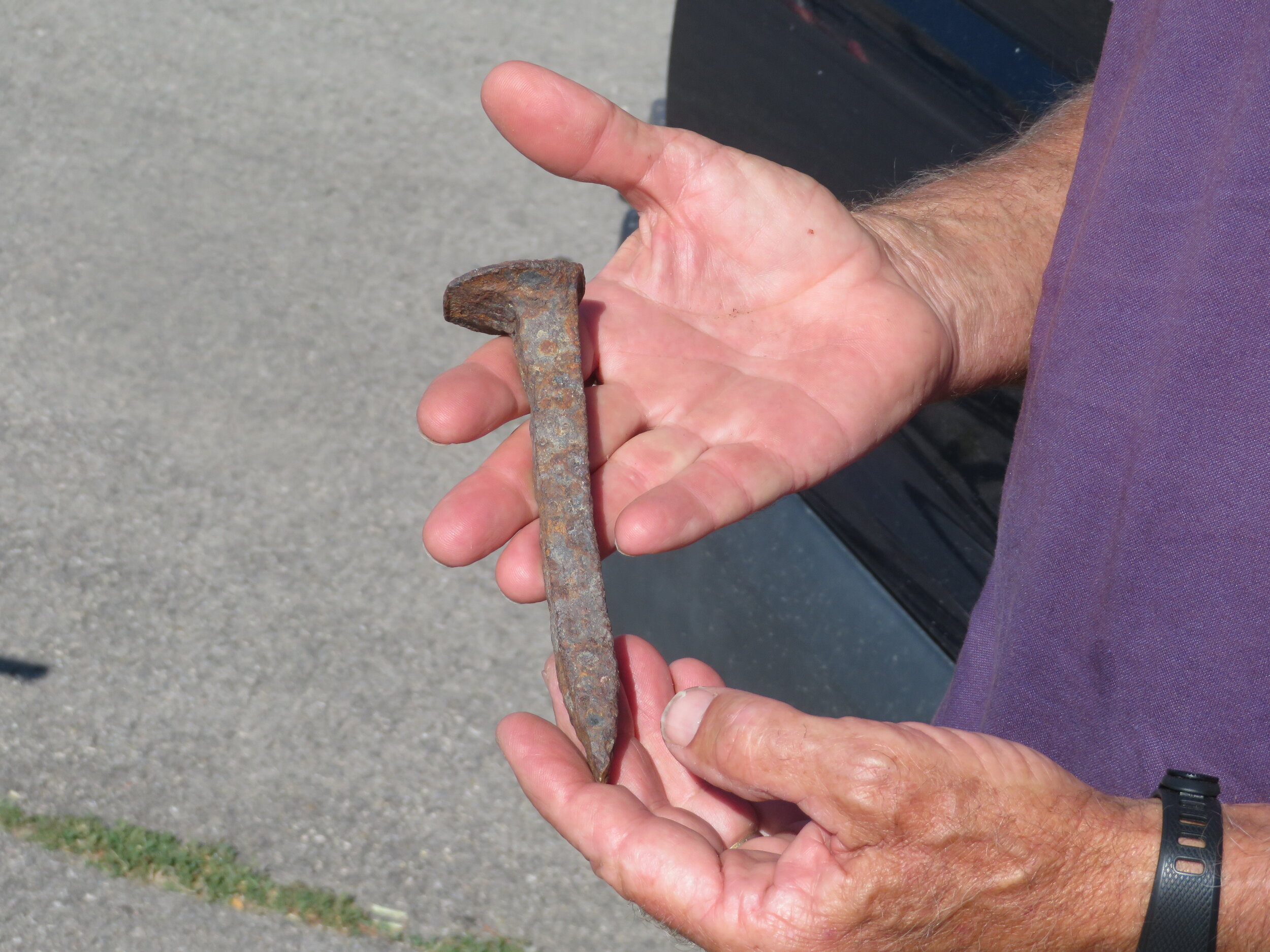Riding the Casper Rail-Trail and Visiting Sacajewea
/View of Casper far below as we descended from Casper Mountain Park
After a night camping at Casper Mountain Park, we drove down the steep, serpentine mountain road to Evansville, Wyoming, and parked Blue right at the middle point of the 8.5 mile Casper Rail-Trail. We parked at a Super 8 and took to the trail which was just across the street. Our logic in parking half way was that if anything went wrong on the 8.5 mile trek (17 miles roundtrip), it wouldn’t be as far to get back to Blue. As it turned out, all went well, but with David’s recent spate of flats, we couldn’t be too careful.
We’ve begun stowing the bikes in the center portion of Blue which makes it easier to get them in and out with no dissembling and subsequent re-assembling. We’ve got the stowing process down to ~5 minutes max, the bikes kept in place with bungee cords.
The gravel roadbed was rough and weedy.
We opted to do the Evansville leg of the trail first, figuring it would be the most difficult part… and it was. The railbed was rough gravel with lots of pot holes and soft sand in spots. Weeds had overtaken parts of the path and it was apparent not many bikers used this portion of the trail.
On the positive side, we were by ourselves, it was an absolutely beautiful morning, the trail was lined with sunflowers and David found an old rusty railroad spike… a perfect memento for a rail-trail ride.
On the positive side, the day was beautiful and the path was lined with sunflowers.
David found an old railroad spike along our route… a great memento of our rail-trail ride.
We stopped at Blue on the return trip for a quick swig of coffee and then headed in the opposite direction to Casper. When we crossed the city line into Casper, the path changed dramatically. It was paved, easy to maneuver and an absolute pleasure to ride through downtown Casper.
We returned to Blue, unscathed, enthusiastic about bike-riding and a little sweaty. We think we’d like to do more of this. We managed 17 miles this morning… not far for most bikers, but for newbies, not bad. I did decide that I definitely need gloves as my hands were feeling pretty sore after our ride. We’ll have to work on that.
We packed up the bikes and headed west towards Riverton, Wyoming. The route is through high chaparral with native sagebrush plants that seem to go on forever. It’s home to the endemic sagebrush grouse and native pronghorns. We saw lots of antelope and unfortunately, lots of antelope roadkill along the roadside.
Peaks of the Rockies probably the Tetons, still snow-capped, were visible in the hazy distance. This area was once part of the Oregon Trail and we couldn’t help ponder what the wagon train folk must have thought as they spied the mountains for the first time rising in front of them. We passed through the scenic Wind River Canyon, through tunnels and canyons and were struck by just how grand, beautiful and diverse our country is. Majestic… awe-inspiring… eye candy too beautiful for my words to describe.
It didn’t seem too far out of the way to go to Fort Washakie and pay homage to Lewis & Clark’s guide.
I saw a tiny dot on the Wyoming road map indicating Sacajewea’s grave in Fort Washakie. It didn’t seem too far out of the way to go to pay homage to Lewis & Clark’s guide. There was a small sign on the road pointing in the direction of the Native American cemetery. An Anglo cemetery was located in-town; the Native American cemetery was a few miles away on an unmarked road.
The cemetery was hot, dry and parched. Hundreds of grasshoppers leapt and bounced on the dusty, arid ground in front of us. Hand-carved crosses, flowers and colorful flowers marked the graves of the dead.
A dry, dusty path led to Sacajawea’s gravesite.
A narrow, well-worn path wended its way up a small hill to Sacajewea’s gravestone… situated between the graves of her two sons, Baptiste and Bazil. There’s significant controversy as to where Sacajewea is actually buried.
The Shoshone believe she is buried in the Wind River Mountains on reservaton lands. North Dakota claims her final resting place, but her people believe that it is her sister who is buried there and that it is only her burial marker that we see here. We’d tend to go with the beliefs of her Shoshone people, but who are we to know? So much legend surrounds Sacajewea and her life that it’s hard to know what is true and what is myth. Perhaps her reputation has been elevated beyond reality, but this Shoshone teenage woman’s participation and contribution to the Lewis & Clark Discovery Expedition is without question.
A statue of Sacajewea holding a sand dollar she carried back from the Pacific Ocean. The sand dollar is significant, as it was given to Chief Washakie. He wore it with honor in many historical pictures.
We continued on to Thermopolis… natural hot springs, tourist-magnet and a very small section of the Great American Rail Trail. Guess why we went?














